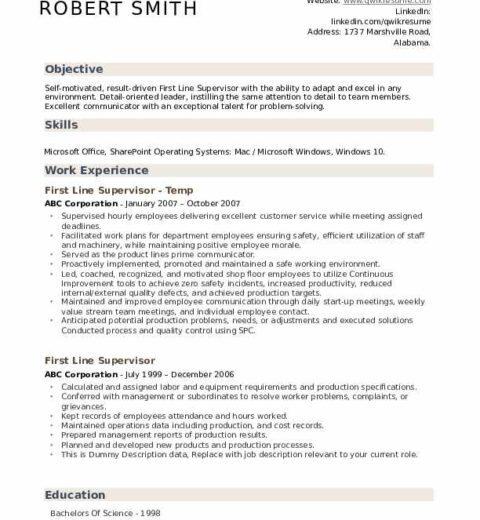Creating a compelling resume is an essential step in securing desired job interviews. A well-crafted resume serves as your professional calling card, encapsulating your skills, experiences, and accomplishments in a way that captivates hiring managers. To construct a proficient resume, consider the following components that contribute to an effective presentation.
1. Understanding Resume Objectives
The primary function of a resume is to succinctly convey your professional journey to potential employers. It should highlight your qualifications, elucidate your unique skills, and articulate your value proposition. Understanding your audience—namely, the recruiters or hiring managers—is pivotal. Tailoring your resume to meet the specific demands of the job description enhances its relevance.
2. Selecting the Appropriate Format
There are several formats to choose from, each with unique advantages. The three predominant formats include:
- Chronological Format: This format lists your work history in reverse chronological order, making it ideal for candidates with a solid employment history. It emphasizes stability and career progression.
- Functional Format: This structure prioritizes skills and experiences over chronological work history. It is particularly beneficial for individuals with gaps in employment or those transitioning careers.
- Combination Format: As the name suggests, this format merges the attributes of both chronological and functional formats, showcasing relevant skills followed by a chronological work history for an all-encompassing view of your capabilities.
Choosing the right format ensures your resume aligns with your career narrative and goals.
3. Crafting a Compelling Summary
A resume summary or objective statement is your opening volley. This brief section, typically comprising two to three sentences, encapsulates your career highlights. It should draw attention immediately. A strategic approach involves incorporating keywords from the job description to enhance visibility in applicant tracking systems (ATS). Use strong action verbs and specify your key accomplishments to entice the reader further.
4. Detailing Your Work Experience
When detailing your work experience, present it in a clear and organized manner. This section should include the name of the organization, your position, and the employment dates. For each role, utilize bullet points to outline your responsibilities and achievements. Quantifying your successes with metrics adds a powerful dimension. For instance, stating that you “increased sales by 20% within one year through targeted marketing initiatives” provides tangible evidence of your impact.
5. Highlighting Relevant Skills
In today’s competitive job market, showcasing relevant skills is paramount. Divide your skills into categories such as technical, interpersonal, or analytical skills. This method not only provides clear insight into your capabilities but also allows hiring managers to easily gauge your fit for the role. Tailoring this section to match the skills demanded in the job posting reinforces your suitability for the position.
6. Educational Background
Your educational background forms a crucial aspect of your resume, particularly for recent graduates or individuals shifting careers. Include degrees obtained, institutions attended, and graduation dates. If applicable, incorporate relevant coursework, honors, or extracurricular activities that could bolster your candidacy. For seasoned professionals, this section may be abbreviated to concentrate on experience rather than prolonged education history.
7. Additional Sections
Several ancillary sections can bolster your resume. Consider the inclusion of:
- Certifications and Professional Development: Highlight relevant certifications, licenses, or courses that distinguish you from other candidates.
- Volunteer Experience: Nonprofit work can reflect your values and skills, particularly if it aligns with the prospective employer’s mission.
- Awards and Honors: Recognitions from previous employers or industry accolades can showcase your excellence and dedication.
Each additional section should serve a definitive purpose, reinforcing your qualifications and enrichening your narrative.
8. Formatting and Aesthetic Appeal
Clarity and visual appeal significantly influence the impression your resume creates. Utilize professional fonts, appropriate font sizes, and consistent formatting throughout the document. White space serves as an essential component, enabling ease of reading and allowing critical information to stand out. Avoid overly elaborate designs; simplicity often speaks volumes in creating a professional image.
9. Tailoring Your Resume for Each Application
Customization is not merely a suggestion; it is a necessity. Each job application should prompt you to adapt your resume. Analyzing the job description for requisite skills and qualifications allows you to emphasize pertinent experiences. This approach not only demonstrates your interest in the role but also ensures your resume resonates with the specific needs of the employer.
10. Proofreading and Final Edits
Errors or inconsistencies can undermine an otherwise stellar resume. Polishing your document through rigorous proofreading is essential. Look for grammatical errors, typos, or formatting inconsistencies. It can also be beneficial to enlist a second pair of eyes—whether a colleague or a professional editor—to capture issues you might overlook.
In conclusion, a well-structured resume serves as a robust tool in your job search arsenal. By understanding its components and tailoring each application, you can significantly enhance your chances of not just attracting attention but securing interviews. The art of crafting a resume transcends mere occupation listing; it is about portraying your professional identity with clarity and precision.




